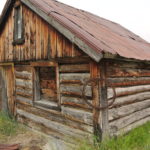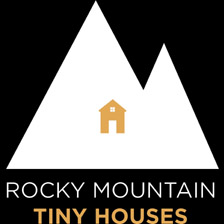 Tiny houses or small houses in America are nothing new. Even before European settlers arrived, small and/or portable architecture could be found among the hundreds of Native American tribes scattered across the continent. Most everyone is familiar with tipis (teepees), but Native Americans also lived in humble structures such as wigwams, longhouses, waddle and daub, chickees, grass houses, and small adobe structures, to name a few. Pioneer settlers usually adopted the tried and true log home with chinking. Apartments in crowded cities during the industrial revolution were often
Tiny houses or small houses in America are nothing new. Even before European settlers arrived, small and/or portable architecture could be found among the hundreds of Native American tribes scattered across the continent. Most everyone is familiar with tipis (teepees), but Native Americans also lived in humble structures such as wigwams, longhouses, waddle and daub, chickees, grass houses, and small adobe structures, to name a few. Pioneer settlers usually adopted the tried and true log home with chinking. Apartments in crowded cities during the industrial revolution were often very small. Tiny Houses in olden days were much more a factor of necessity rather than of choice.
very small. Tiny Houses in olden days were much more a factor of necessity rather than of choice.
In today’s market where even the very poor have access to houses much larger than our American predecessors, the decision to live in a Tiny House is a very conscious one. Sure, some do it for financial reasons, and saving money is a huge benefit of living tiny, but there is more to it than this. People feel compelled to “do the right thing”, reduce their footprint, live within their means, or [insert your reason here]. My reason for choosing the Tiny Life is simple: to keep it simple. Since making the switch to a Tiny House, I have no debt. I have hardly any bills. I have very little house to clean and maintain. I don’t own any furniture, and own very little housewares. I have to write one check a month, to rent the land that I park my Tiny House on, and if I really wanted to I could get creative and find a land sitting situation to live on some land for nearly free. If I don’t like where I’m out, I can hitch up and move on along.
This is but a brief insight to my personal decision to live in a Tiny House. Everybody else’s reason will differ. I’ve put together this page to help you understand some of the psychology involved in the modern Tiny House movement. First off, a little history. While this movement cannot be contributed to a sole individual, many people in the Tiny House community credit Jay Schafer as the founder after he built “Tumbleweed” in 1999 and went on to not only achieve great success with the Tumbleweed Tiny House Company, and now his newer company, Four Lights Tiny Houses, but has been featured on Oprah, in the NY Times, on Ted Talks, in local news stations, and has given several Tiny House workshops across the country, just to mention some of his influence on the movement. Jay will be the first to tell you, however, that there are several others to credit including Sarah Susanka with her book The Not So Big House, Lloyd Kahn, author of Shelter and even Henry Thoreau’s Walden, to name but a few. Since these formative years and figures, the Tiny House movement has gained widespread popularity across a variety of outlets including newspapers, TV, documentaries, word of mouth, internet, and most importantly, people that have actually built a Tiny House and live in it full time.
I also own and operate a website about the Paleo Diet. When I first started it back in 2011, the paleo movement was gaining steam, but many were quick to dismiss it as yet another “fad diet”. Knowing full well the benefits of this lifestyle, as well as the problems associated with a our modern food system, I knew it wasn’t a fad. I knew it would explode, and only get stronger and stronger as people saw for themselves how the diet could change their lives. I feel just as strongly about the Tiny House movement. People are getting tired of filling their cavernous houses with stuff, constantly having to clean and maintain it. They are getting tired of being weighed down by a mortgage they can barely afford.They are getting tired of living paycheck to paycheck. They are just getting sick and tired of all the complications and loss of freedom that come from living in a house that’s just too big. Tiny Houses offer a solution to these problems. The Tiny House movement is here to stay, and I think time will show us living tiny is a big idea.
In the spirit of simplicity, there is no need for me to re-invent the wheel or regurgitate what has already been so clearly stated. Below are some links to other websites with their version of the Tiny House Movement that are well worth reading. If you come across some different ones that you really like, feel free to submit them to me and I will re- post.
Jay Shafer, founder of Tumbleweed Tiny Houses Four Lights Tiny Houses.

